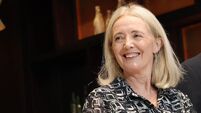Pound rises after British inflation climbs for first time in 10 months

The data, which follows bigger-than-expected falls in inflation in recent months, potentially adds to concerns at the Bank of England, which raised interest rates to a 15-year high of 5.25% in August in a bid to rein in price rises.
The pound rose today after data showed Britain's annual rate of consumer inflation increased in December for the first time in 10 months and came in higher than expected, challenging expectations that Bank of England rate cuts are near.
The pound strengthened versus the euro, which was down 0.16% at 85.93 pence.
Official figures showed Britain's annual rate of consumer price inflation accelerated to 4% in December from 3.9% in November which was its lowest in more than two years.
A Reuters poll of economists had pointed to a reading of 3.8%.
The data, which follows bigger-than-expected falls in inflation in recent months, potentially adds to concerns at the Bank of England, which raised interest rates to a 15-year high of 5.25% in August in a bid to rein in price rises.
Wednesday's figures showed that core inflation - which excludes volatile food, energy, alcohol and tobacco prices - was 5.1% in December, the same rate as November.
Services inflation increased to 6.4% in December from 6.3% in November.
"The stronger than expected reading for both core and services inflation in December .. are disappointing and will discourage the Bank of England from beginning to cut rates sooner," analysts at MUFG said in a morning note.
"The UK rate market is not fully pricing in the first 25 basis points rate cut from the BoE until June. The hawkish repricing of the UK rate curve has contributed to the pound strengthening modestly this morning."
Interest rate cuts from most major central banks around the world are expected in 2024, and a major driver for the pound in the near to medium term is whether the Bank of England will begin its rate cuts later than the Federal Reserve and European Central Bank, and by how much.
Market pricing currently indicates a roughly 80% chance of a Bank of England rate cut in May.
It shows just over a 60% chance of the Fed cutting as soon as March, and the first ECB rate cut is fully priced in April, with markets pointing to a small chance they move in March.
Those Fed bets reduced slightly on Tuesday after Federal Reserve Governor Christopher Waller said the Fed should not rush towards cuts in its benchmark interest rate, along with softer economic data out of China, contributing to the stronger dollar.
- Reuters










